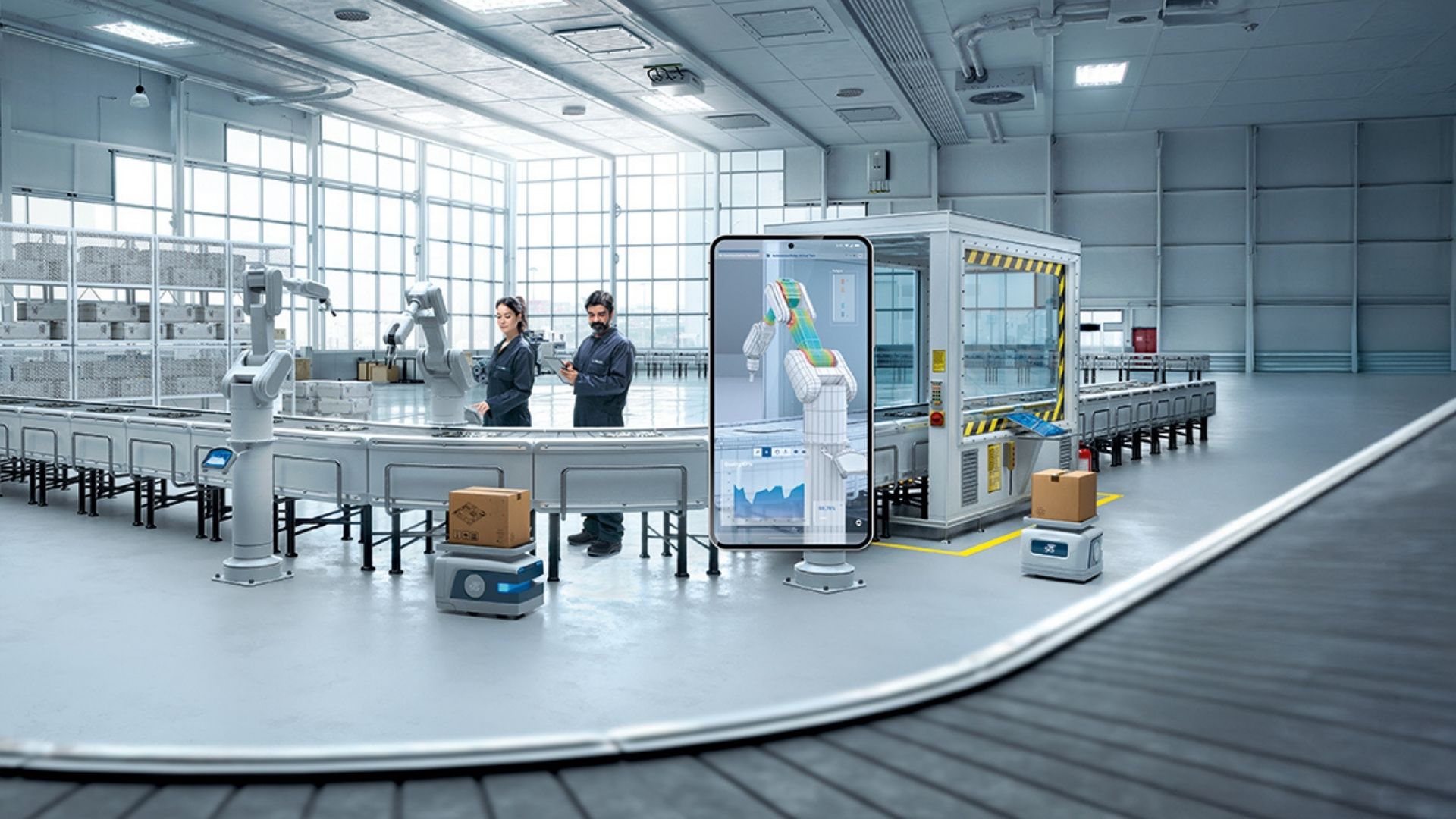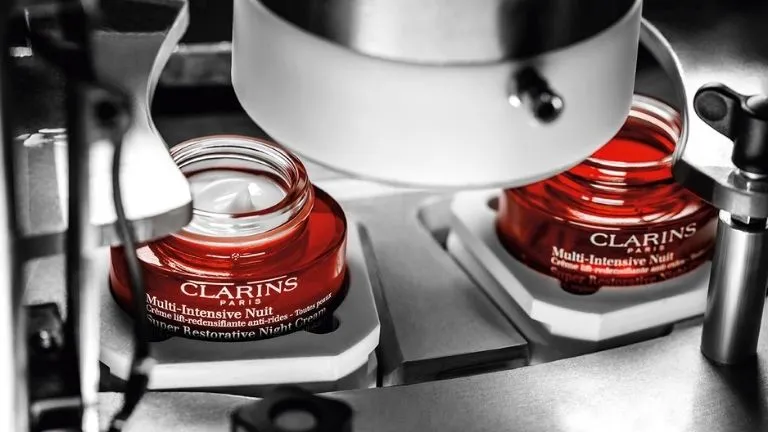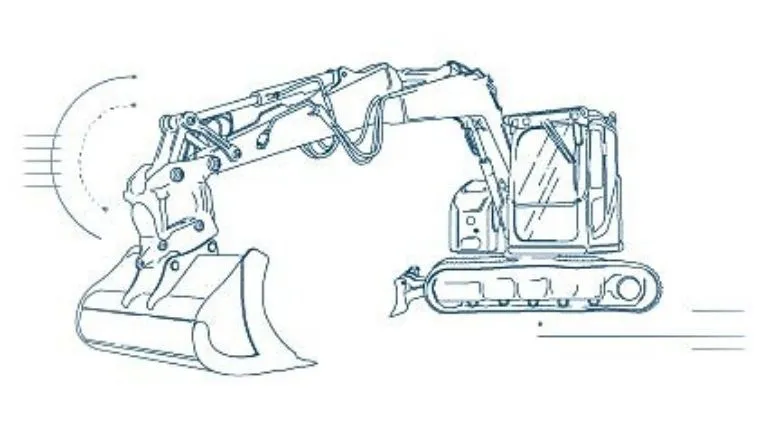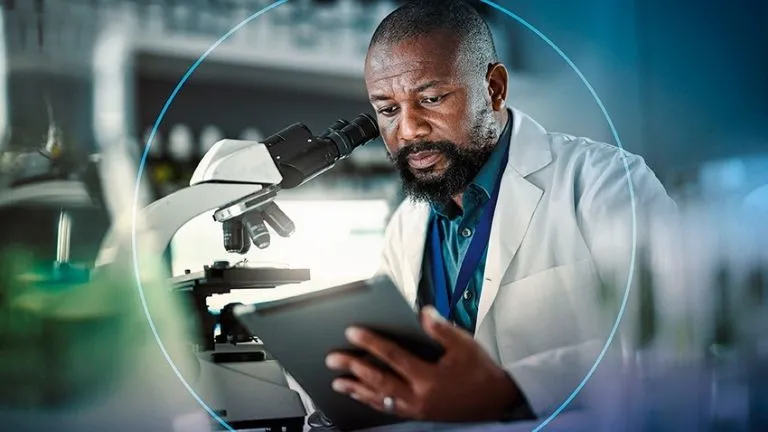Transforming manufacturing with virtual modeling and innovative thinking
Virtual environments are empowering manufacturers to become more efficient,agile, precise, competitive and sustainable
In the VIRTUAL WORLD
manufacturers are empowered to endlessly test ideas to address their most complex challenges using precise, scalable and science-driven methods...
...enhancing REAL LIFE
by developing optimized production facilities and processes that prioritize worker safety and sustainability, designing human-focused products.
Virtual technology empowers modern manufacturers to uncover new possibilities for real-world impact in efficiency, precision and sustainability, reshaping how industries create, operate and scale. The Manufacturing Industries sector thrives on combining cutting-edge technology with innovative thinking. Virtual environments are fueling this revolution by allowing companies to design, simulate and test ideas for products and processes before physical implementation, heightening efficiency and reducing waste. This isn’t just about technological advancement; it’s a necessity for organizations to stay competitive in fast-evolving markets and to react to consumer wants and needs. From precise production and sustainable manufacturing, to planning modular facilities, to employing virtual twins that monitor processes in real time, the virtual world is helping manufacturing companies transform theoretical possibilities into impactful realities and helping to shape the Generative Economy.
Sustainable luxury cosmetics from field to skin
Clarins has always believed that nature holds the key to beauty. Now, Clarins is taking that philosophy further by combining locally grown botanicals with cutting-edge digital manufacturing. With Dassault Systèmes, Clarins modernizes its French facilities, merging tradition and innovation for smarter, more sustainable manufacturing.
Clarins’ commitment to sustainability runs deep in the luxury cosmetic brand’s DNA. Known for its luxury skincare and makeup, the French company sources 80% of its active ingredients from nature and has made transparency, quality, and innovation central to its ethos. Across its two states – a newly established 115-hectare site near Nîmes and an open-air laboratory with a private farm in the French Alps – Clarins cultivates a rich variety of botanicals, including nopal, quince, almond, apricot, lavender, lemon thyme and cornflower. These plants are a primary source of high-quality, organic raw materials for Clarins’ formulas.
Beyond ingredient sourcing, Clarins is also transforming the way its products are made. To align production with its commitment to quality and transparency, the company has embarked on a major digital transformation. At the heart of this shift is Dassault Systèmes’ manufacturing execution system (MES), DELMIA Apriso, which is redefining how Clarins manufactures and delivers its luxury beauty products with greater efficiency and precision.
For years, Clarins has operated a single production facility in Pontoise, France. As demand for its products grows worldwide, Clarins recognized the need to expand. The company’s new Sainte-Savine plant, built from the ground up, represents a cutting-edge approach to manufacturing. Designed for flexibility and agility, this modular, scalable facility combines automation and advanced supply chain management to optimize every step of the production journey. The new factory will initially produce 20 million products per year, scaling up to 100 million in the future – bringing it on par with Pontoise. To achieve this, Clarins’ manufacturing execution system integrates production, packaging, logistics and quality management while tracking all operations in real time.
Instead of simply adding new technology on top of old ways of working, Clarins took the opportunity to simplify and improve its processes. When implementing DELMIA Apriso, the company redesigned its workflows for maximum efficiency.
Data-driven production monitoring
Automation is central to Sainte-Savine’s plant design. Acting as the factory’s central nervous system, DELMIA Apriso interfaces directly with all equipment and links automated guided vehicles (AGVs), production lines and quality control systems, keeping operations in sync.
AGVs handle everything throughout the plant, moving seamlessly as they navigate the shopfloor and supply production lines without manual intervention. Wherever an AGV is at work, DELMIA Apriso is there too, providing complete oversight of quality and production while supporting Clarins to maintain its zero-defect standards.
By monitoring production speed, yield and equipment efficiency in real time, Clarins can quickly pinpoint bottlenecks, refine processes and stay on track, producing the right quantities, using materials wisely and keeping waste to a minimum. This information also flows to the electronic batch record, tracking weight, batch numbers and other key variables to ensure every stage of production is traceable, secure and optimized for accuracy.
Operators now see all essential information on a single screen rather than having to switch between multiple applications. This unified approach saves time, reduces errors and makes tasks more straightforward. The feedback from teams is that there’s no comparison between an old-generation screen and the DELMIA Apriso user experience.
The next chapter in sustainable beauty
Clarins’ new Sainte-Savine facility is a model for the company’s future. With a highly optimised layout and cutting-edge MES, it represents the company’s vision for modern, efficient, and sustainable manufacturing.
Following the successful rollout of DELMIA Apriso at Sainte-Savine, Clarins is now preparing to bring its Pontoise plant up to the same digital standard. Beyond that, the company is exploring other Dassault Systèmes solutions, including 3D design, to push its digital transformation even further.
- 80%
OF CLARINS’ ACTIVE INGREDIENTS ARE SOURCED FROM NATURE
- 30%
OF CLARINS’ PLANT-BASED INGREDIENTS WILL BE PRODUCED FROM ITS OWN ESTATES BY 2030.
- 100 MILLION
PRODUCTS PER YEAR WILL BE MANUFACTURED AT CLARINS’ NEW SAINTE-SAVINE PLANT.
Heightening efficiency with the 3DEXPERIENCE platform
Japan’s Kobelco Construction Machinery turned to the 3DEXPERIENCE platform to streamline operations, enhance design processes, boost production efficiency and deliver improved customer experiences through innovation and accurate integration of feedback.
New opportunities for growth
To build on its strong legacy of heavy machinery innovation and continue to transform, Kobelco Construction Machinery is enhancing its collaboration with Dassault Systèmes – a partnership first established in 2000 when it deployed CATIA V5 for design and ENOVIA SmarTeam for product data management.
Kobelco’s design teams are spread across factories in China, India and Japan. They’ve shortened product design and improved design cycle times by leveraging CATIA V5 for 3D modeling in new product development, but have been doing so through an in-house data integration between CATIA V5 and various highly customized legacy solutions. This created challenges with product design collaboration and lowered efficiency because, without a centralized system, each team must manage data independently. The in-house system requires overnight data sharing, a process that is not only cumbersome but also prone to issues like duplicated data and extended wait times for synchronization. This setup also prevented Kobelco from updating their systems and benefiting from the rapid evolution of IT.
Expediting the heavy machinery design process
Since all design data will be accessed from a single unified environment, Kobelco’s various teams will no longer have to wait for data to be shared overnight between locations. They expect to speed up the collaboration between domestic and overseas design departments considerably.
Democratizing data
ENOVIA’s product data management capabilities will allow 3D models to be used throughout the entire company and provide everyone access to a single unified bill of materials. They also expected this to translate into time and cost savings. Currently, Kobelco spends €400 million(Y56 billion) a year on purchased parts. By having better data surrounding these parts, they’ll be able to source from the right supplier at the right price and at the right time. They’ll also be able to better negotiate prices, consolidate suppliers and minimize excess stock. They estimate that just a two per cent reduction would result in savings of €8 million (Y1.1 billion) per year.
Improving production processes
DELMIA’s smart factory capabilities offer further value to Kobelco. DELMIA will help improve accuracy by eliminating the variation between the simulated workload and actual work time at each workstation.
Kobelco expects each plant will be able to reduce takt time (the rate of production required to meet customer demand) from 15 to 12 minutes and increase production from 10,000 units per plant per year to 12,000 units per plant per year.
Kobelco is also looking to leverage virtual twins to enable problem-solving before machines are even built, as well as to ensure greater precision during manufacturing. They also plan to use virtual twins to simplify maintenance, allowing for faster repairs and reduced downtime. Ultimately, these capabilities will help Kobelco in their quest to maximize customer value and satisfaction, achieve lasting growth and become a leading global brand known for innovation.
Taking air taxis from theory to reality
Joby Aviation’s all-electric vertical take-off and landing air taxis will soon be shuttling passengers in Dubai. Joby engineered its entire operations from the ground up, leveraging Dassault Systèmes’ 3DEXPERIENCE platform.

Building the world’s first all-electric vertical take-off and landing air taxi
In early 2023, Dubai’s Road and Transport Authority (RTA) announced that Dubai will be the first city in the world to introduce an air taxi service – a move that it believes will transform urban mobility as we know it. As soon as 2025, passengers will be able to travel from Dubai International Airport to Palm Jumeirah in just 10 minutes, in an electric air taxi traveling at200 miles per hour (322 kph). The same journey would take around 45 minutes in a car.
The company facilitating Dubai’s ambitious plans? California-based Joby Aviation.
“We’re building the world’s first all-electric vertical take-off and landing (eVTOL) air taxi,” saidEric Allison, Joby Aviation’s chief product officer. “Our aircraft can take off vertically like a helicopter, and then fly like an airplane. It can hold four passengers and a commercially rated pilot. It will transform how we move around – integrating into mobility-as-a-service. You can open an app on your phone, select ‘Joby’ through our app or via one of our partners, and then get to where you want to go faster than any other way.” Joby engineered its entire operations from the ground up, by leveraging Dassault Systèmes’ 3DEXPERIENCE platform from the outset.
Meeting complex certification criteria
Building an electric vertical take-off and landing (eVTOL) aircraft certified for commercial flight is no mean feat. It has taken Joby 15 years of engineering, prototyping and refinement as well as close collaboration with industry leaders such as NASA and Toyota. The company also works with the US Federal Aviation Administration (FAA) on how to bring this new technology – which is a set of new technologies – to the market in the most expedient and safest way possible, adhering to the regulator’s high standards.
“To launch this service and to make it possible to move in this transformational way, we have to certify our aircraft,” Allison said. But this isn’t a simple process. “We have to certify electric motors. We have to certify the battery systems. We have to certify the fly-by-wire electronics that enable pilots to fly these amazing new machines. That’s a lot of work. We have to work with the regulators to define the safety requirements for this new class of technologies. We have to define how we’re going to meet those safety requirements. And then we have to work on all of the myriad of tests, all of the test plans, all of the things we have to do to show compliance with that set of rules that we’ve agreed with the regulators. We’re deep into that process right now.”
Joby couldn’t achieve what it has to date without adopting the 3DEXPERIENCE platform as a collaborative environment, through which it carries out a range of activities such as composite design, additive manufacturing, verification through simulation, data management and more.“Dassault Systèmes has been a fantastic partner,” Allison said. “Our entire digital engineering is built around its 3DEXPERIENCE platform, and we are doing all of our design work in CATIA. We are tracking all of our engineering data in ENOVIA.”
A collaborative route to success
With the 3DEXPERIENCE platform offering digital continuity from concept to flight, Joby takes a vertically integrated approach to designing and manufacturing its aircraft. “That means we have engineers working across different disciplines,” Allison said. “We’ve got engineers working incomposite structures. We have engineers working in small electronics. We have engineers working in motor design, battery design and integrated vehicle design. We have to bring all of those disciplines together.”
The 3DEXPERIENCE platform enables Joby to do just that and then allows it to connect engineering to manufacturing so that it generates the required data to not only transmit to its manufacturing systems and build its amazing aircraft but also enable full traceability.
“This is really a big advantage for us, that we have a best-in-class system that we can use to track, manage and ultimately act on, manufacture and bring to market what started out as data and turns into the real world,” Allison said. “To create world-class technology, you have to use world-class technology.” With the 3DEXPERIENCE platform, that’s precisely what Joby has got.
Driving progress for customers
- HD Hyundai XiteSolution
- Mahindra & Mahindra
- Monceau Automobiles
- Pivotal
HD Hyundai XiteSolution
Korean construction machinery company HD Hyundai XiteSolution needed to create moresynergy between its subsidiaries with a common global product development managementsystem. Dassault Systèmes’ out-of-the-box capabilities helped them integrate their design,product lifecycle and bill of materials management capabilities in just six months.
Mahindra & Mahindra
Mahindra & Mahindra, a leader in automotive, farm and services businesses in India, is advancing its digital transformation by selecting Dassault Systèmes’ 3DEXPERIENCE platform on the cloud to accelerate its end-to-end new product development process, including for all future auto programs.
Monceau Automobiles
To convert classic Mercedes-Benz vehicles into 100% electric cars, Belgium’s MonceauAutomobiles leveraged the Efficient Multi-Energy Platform industry solution experience to gain 3D design precision and manage its complex repository of product data.
Pivotal
California startup Pivotal is opening the world to the possibilities of personal aviation with itslight electric vertical take-off and landing (eVTOL) aircraft, Helix. The 3DEXPERIENCE platform,including the Reinvent the Sky industry solutions experience, is supporting a vertical design-to-manufacturing approach and helping to bring Pivotal’s first production aircraft to market.






